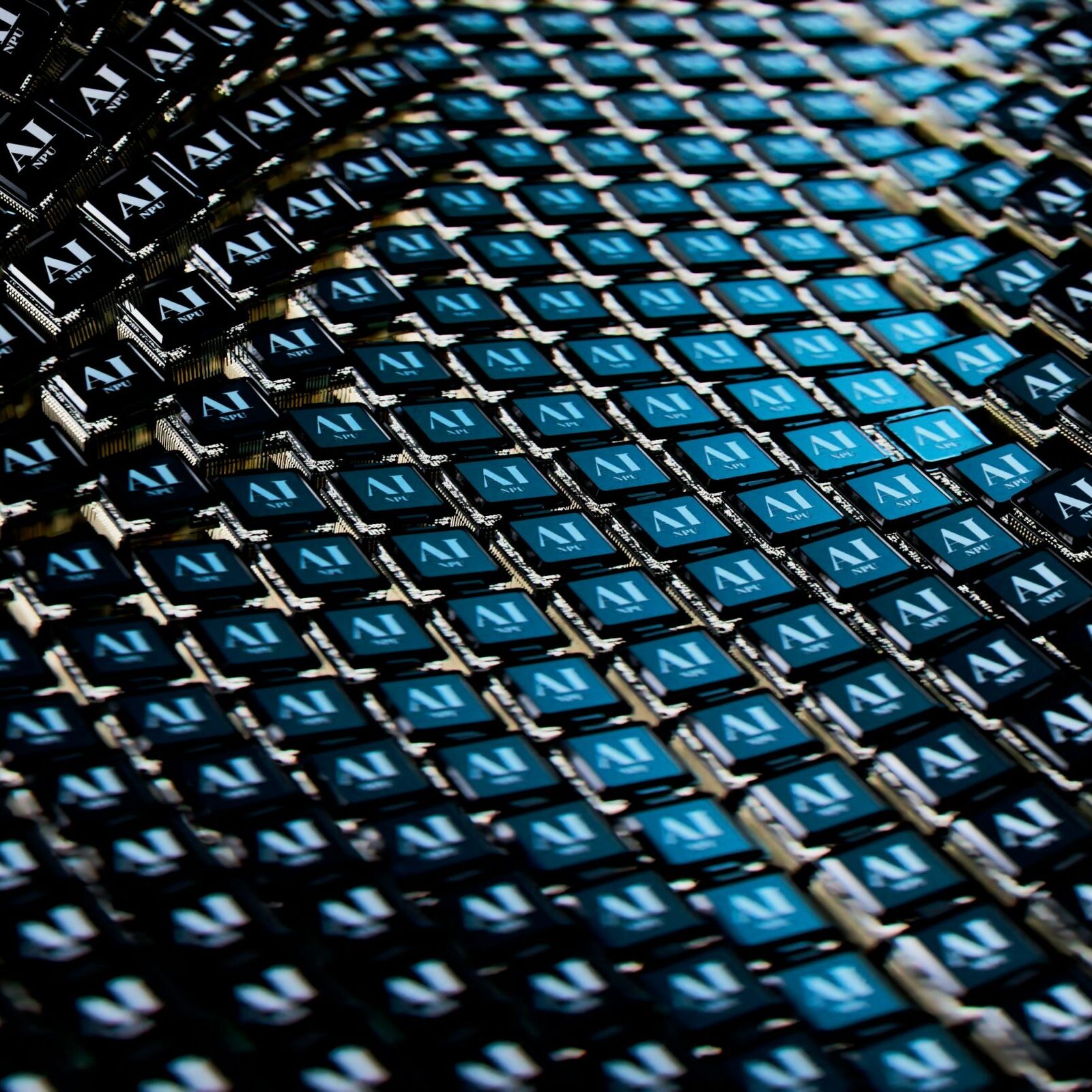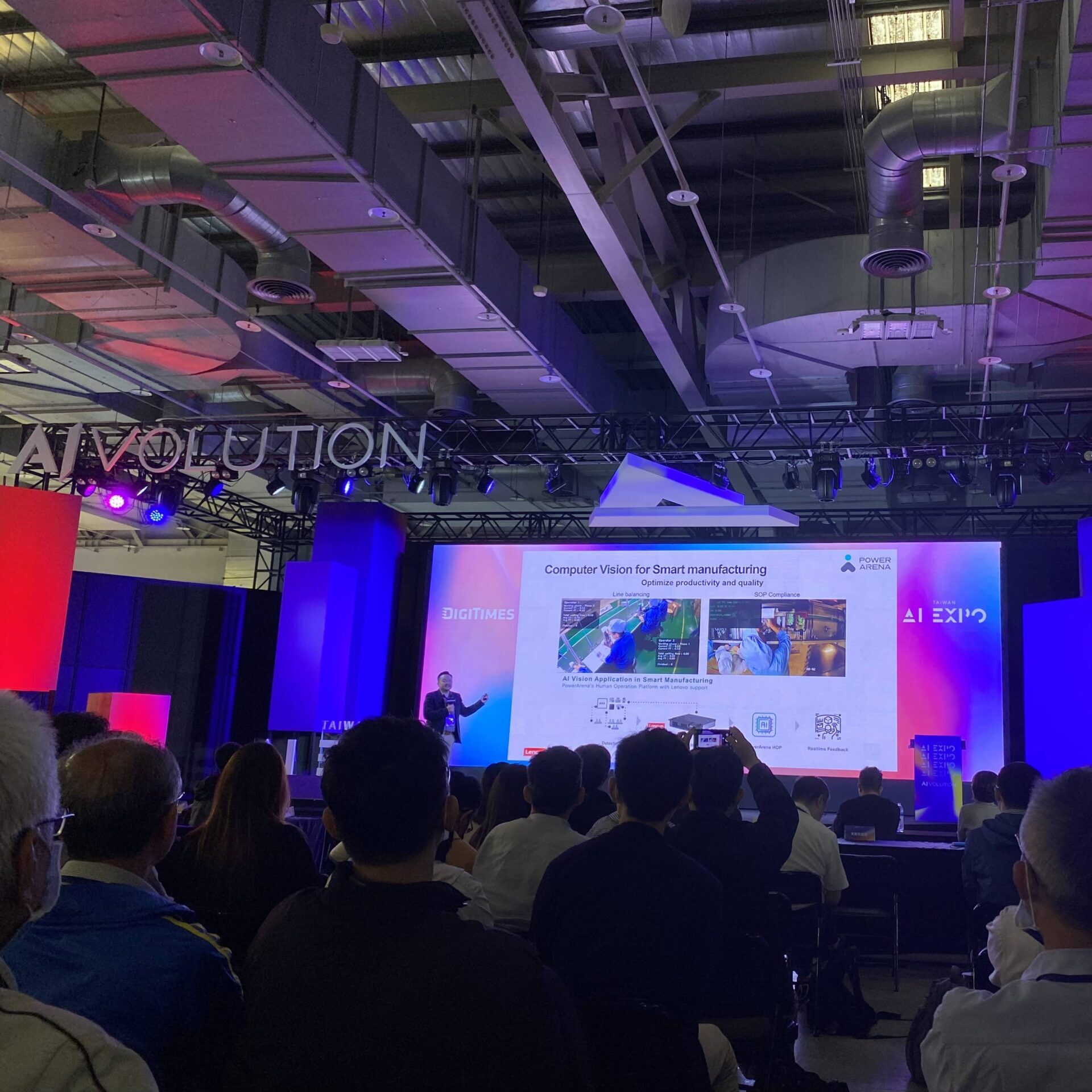Imagine an artificial assembly station with a SOP that includes 9 processes, with a standard cycle time set at 45 seconds. After completion, the WIP is handed over to the next station for further assembly. However, various problems can occur within these 45 seconds, making it challenging to ensure all tasks are completed within this timeframe.
Starting from actual factory cases, Ray from Advantech shares how AI vision can be integrated into production lines to assist in calculating the cycle time of workstations and reviewing SOPs. Beyond saving management manpower, it also enhances quality and operational safety.
Key interview highlights:
- AI vision for proactive error detection, upgrading human resource management
- AI applications in factories: Improvements in capacity, yield & safety
- Is the knowledge gap between IT and OT becoming a key to the success of AI implementation?
- Smart manufacturing trends: Edge AI servers
Ray has extensive collaboration experience with many major manufacturers, with diverse AI applications across production lines, workstations, and standard operating procedures.
Welcome Ray to our PowerTalk podcast, we’re thrilled to have Ray from Advantech join us today. Would you like to quickly introduce yourself?
Ray: Thank you for inviting me to PowerArena, I’m honored to be here for this discussion on AI trends and industry applications. I work as a BDM at Advantech, where I collaborate with marketing teams, integrate with clients, and develop solutions. Advantech specializes in hardware, so we often collaborate with various ecopartners to provide integrated solutions in sensing, AI computing power, and communication for our clients.
Ray: With experience in imaging and machine vision, coupled with Advantech’s top-notch Nvidia platform, I’ve delved into the AI trends to assist clients in bridging industry applications.
Advantech primarily focuses on providing hardware solutions. Over the past few years, due to factors such as the pandemic and geopolitical issues, we’ve observed a restructuring within the global industrial landscape. Ray, what changes have you noticed at Advantech? Especially in the context of the trend towards offshore production and facilities, such as in Vietnam or Thailand, what observations have you made?
Ray: Firstly, many companies have indeed started reevaluating their production locations or entire supply chains due to geopolitical reasons and the pandemic, as you mentioned. This includes considerations regarding raw materials and workforce dynamics. Many companies are branching out to different locations.
Ray: From what I’ve seen, AI can assist in several ways. Firstly, it can aid in deploying new production lines. For instance, when constructing new facilities, AI can be integrated from the outset. When planning for AI applications on a new production line, considerations include whether certain sensor components or transmission devices need to be deployed. Additionally, when collecting data for AI inference, quick integration can be facilitated without the need for further redeployment. This aspect is crucial when considering production line transfers or when manufacturing plants are contemplating deploying new facilities.
Ray: Secondly, the addition of new functionalities. After deploying production lines, many companies relocate their existing lines to new markets. In such cases, the existing lines may not be as “smart,” or may lack sufficient IoT devices. This presents an opportunity to deploy AI applications, including the necessary data collection and information transmission objects, during this transition phase.
Ray: What we can see is that when deploying new factories, there’s a tendency towards, let’s say, “if there’s already a complete solution available on the market, we’ll implement it in the new factory.” For example, if PowerArena offers an optimized solution for human-factors operational processes, it’s easy to implement when setting up a new factory. Traditional industries, however, tend to be more conservative; they might proceed with implementation step by step. For instance, if they see someone else benefiting from an upgraded quality inspection system, they might reconsider whether to upgrade their own system or engage an AI team to do so. Or, if I’m setting up new facilities or logistics and need to implement visual applications like barcode scanning or dimension measurement, can I leverage AI? So, they tend to think more locally, like many other industries. But for EMS factories, AI thinking may permeate throughout the entire production line. That’s roughly the difference.
What suggestions do you have to help everyone smoothly implement new solutions and immediately see results?
Ray: You’re right about “seeing results” being the most crucial aspect for manufacturing as they delve into AI. Many traditional manufacturers or electronic EMS markets, when implementing AI, want to see clear ROI. As solution providers, whether in hardware or software like PowerArena, when offering choices to customers, we need to clearly inform them about the current return on investment and the results they can expect within a few months. Or, drawing from past experiences, we need to inform customers about the benefits they can expect by implementing our solution in their current production lines. This is something we must communicate to our customers.
Ray: Another aspect is what the customers want to see. Perhaps it’s the improvement in efficiency on the production line, and AI can assist in many aspects here. When discussing with customers, we need to understand where their pain points are. Where do they want to increase production line efficiency? Is it in manual labor or in a specific section of the machinery? Or perhaps in quality inspection, whether it’s incoming quality control or outgoing quality control. All these need direct discussion with the customer. Of course, this part requires accumulated experience, so teams like PowerArena or our team at Advantech can provide well-matched solutions to customers, both in hardware and software. The customer might want edge computing or worry about the security of edge computing being accessed by employees and want it pulled back to the backend. Do they want immediate feedback or want to see a visual dashboard in the war room? These are all aspects we need to cooperate with customers to understand their needs and then provide solutions accordingly.
Since 2016, there has been continuous discussion about “smart manufacturing.” Have you seen any related cases worth sharing since joining Advantech?
Ray: Many manufacturing industries have different AI needs, and I’ll give a few examples. Firstly, in semiconductor manufacturing, flawless quality is crucial for stable chip or wafer usage. In their processes, there are layers of stacking, packaging, or different treatment flows. Each segment must have clear and highly precise defect detection because if defective items continue downstream, the process remains faulty. Therefore, troubleshooting must be done in the middle. AI has the advantage that besides identifying non-compliance or defects, it can also determine the type of defect. This allows for classification to pinpoint where in the process there is an issue and to promptly address it. Otherwise, you might know the product has defects, but with such lengthy processes, it’s unclear where the problem lies. Without being able to troubleshoot, you’ll continue manufacturing defects. Hence, we need AI to achieve better product quality. Besides defect detection, it’s crucial to identify what problems need to be addressed in the process to improve overall yield and efficiency.
Ray: The second example is the human-factors aspect in EMS factories. This is a headache for many manufacturing industries nowadays, whether it’s labor turnover or the introduction of new products requiring production process integration. It’s a headache for manufacturing because they have to undergo technology transfer, and after that, they’re unsure if the new batch of workers meets the company’s previous standards.
Ray: So the intervention of human-factors AI actually meets the demand quite well. First, we need to utilize data sources, and human actions and behaviors must be collected through cameras. In the past, to monitor the time taken for a certain process, a line leader would use a stopwatch and a notebook to record manually. However, with solutions like PowerArena now available, data collection can be done by camera at fixed positions. The advantage of fixed positions is that the collected data significantly improves accuracy. Observing the work process of each worker on-site can sometimes be subjective and may overlook details, leading to discrepancies in data and judgments regarding the completeness of process stages.
Ray: All of the above can be aided by AI to conduct comprehensive data collection. The benefit of AI is that it’s emotionless; it simply identifies right from wrong and issues alerts for problems. This allows us to clearly understand the correctness of process stages and the duration of each stage. Of course, this isn’t immediately accessible. Just like a line leader, who, due to experience, can gauge the efficiency of each employee or their workflow. So, what’s the advantage of AI? The advantage lies in being able to point out employee A, who performs a certain process very standardly and quickly. We can use him as a model for the entire AI module, and other employees can follow his procedure, reducing every little detail, and making the entire process more efficient. This is what we call atomic habits. By scaling down everything, the compounded effect becomes very powerful, optimizing the production line significantly.
Especially in EMS factories, the number of workstations is significant, and there are many people on the production line. If each person could increase efficiency even just a bit, the overall time savings and efficiency gains would be quite considerable.
Ray: Indeed, especially in EMS factories where the same thing is done on a large scale. Since labor is required, it means those areas cannot be automated immediately. However, they still greatly need to be complemented by automation to achieve high efficiency and productivity. Therefore, being able to effectively reduce manual labor time for each segment can greatly increase the capacity and yield of EMS factories.
Ray: Let me give another example, besides increasing capacity and yield with AI. Recently, one of our partners implemented practices on the production line to avoid danger. Similar to PowerArena, they utilized machine vision set up in places where employees and machinery could be observed to eliminate employee risks. They’re in the traditional metalworking industry, dealing with the automatic mechanical press and milling machines, where objects may be irregularly shaped. During feeding, it may be based on shapes, discs, or different parts. In such cases, immediate automation isn’t possible, especially with small-scale and diverse processes where they constantly switch different parts and select the rules for mechanical press and milling machines. In traditional industries, it’s easy for accidents to occur during feeding, where the machine might start operating before the hand is withdrawn. Some factories may have regulations requiring employees to place their hands and feet in specific positions for the machine to operate. But as you know, where there are rules, there are also ways to circumvent them. Some employees, to increase efficiency, may use something to press against the machine, pretending that one hand is continuously pressing the machine. During this process, the machine isn’t aware and starts operating because it detects that buttons are pressed. However, in reality, this poses a danger, as the employee’s hand might get caught during the feeding process, which is a very dangerous behavior. To effectively prevent occupational accidents, they use machine vision to ensure that both hands are indeed away from the machine.
Ray: This aspect has made the owners very satisfied. In addition to protecting workers, when discussing with the labor department, this has become a factory regulation specifically for automatic mechanical press and milling machines, effectively protecting workers’ safety. Furthermore, apart from protecting workers, it can also detect foreign objects entering specific areas, preventing damage or defects to the machine or parts during the pressing process. Other factories can also use AI machine vision to accomplish this, so I believe that this AI solution isn’t limited to the electronics manufacturing industry or higher-end industries. It can also be implemented in traditional industries, immediately upgrading them.
For those in manufacturing considering integrating hardware and software for AI-enabled smart manufacturing upgrades, how can they prepare effectively to achieve their desired outcomes?
Ray: The first step, of course, is hardware. As mentioned earlier, whether it’s setting up a new factory or implementing new AI solutions, you need corresponding hardware devices. For instance, collecting information requires sensors, data transmission may require wired or wireless solutions, and additional devices may be needed for interaction with other equipment. Suppose AI yields a result indicating danger, requiring lights to flash or sirens to sound, or sending alerts to the backend for display on a large screen via a dashboard. All these require prior planning.
Ray: The second aspect is software, AI software to be precise. Most companies consider either developing in-house or outsourcing to external teams. Both options have their pros and cons. Developing in-house utilizes internal resources, keeping everything within the company and preventing leakage. However, this approach has a blind spot—it’s confined to internal perspectives and lacks input from external professional teams. Additionally, acquiring AI talent isn’t easy; most AI professionals prefer not to be confined to a specific industry or solution. Their expertise can be applied to various generalized AI applications. Hence, many large companies, including PowerArena’s partners, among the world’s top three, choose external AI specialist teams for assistance. The key lies in their expertise—they know how to approach data, gather and clean it, train the right AI modules, and even apply different perspectives from various industries to solve similar problems. These aspects are challenging for companies to achieve internally within their departments. Of course, the second crucial aspect is the external AI team itself, composed of professionals with significant expertise in AI fundamentals. Finding such talent within a factory is difficult, so if expediting AI implementation is the goal, it’s worth considering first leveraging the expertise of external teams rather than relying solely on internal development.
Ray: From my perspective, Advantech’s collaboration with partners like PowerArena in field deployments can significantly expedite the timeline for AI implementation and quickly meet customer expectations. Of course, it’s no secret that some companies, after utilizing professional teams to implement AI, may opt to take over with their own teams. Regarding software, another consideration within the company is the competition between Operational Technology (OT) and Information Technology (IT). Many companies might assume that IT professionals, who are skilled in programming, can handle AI implementation. However, they may not realize the significant gap in understanding OT processes among IT personnel. Additionally, OT staff may have some resistance, questioning why their workflow should involve IT. Here’s where engaging a third-party professional team is advantageous: they treat both sides equally and execute company policies to maximize efficiency. This aspect greatly improves efficiency when an external team intervenes in both OT and IT.
Ray: Thirdly, there’s the aspect of analysis. Internal company perspectives are often limited, but entities like PowerArena, having observed EMS factories, traditional manufacturing, and advanced manufacturing processes like semiconductor industries, can engage in discussions with different personnel using a common technical language. This is challenging for a company focused solely on a specific industry to achieve. Therefore, I would recommend approaching projects with a more generalized mindset to tackle specialized tasks. Hence, third-party teams would be preferable.
So, when introducing new technology into the field, what should be considered? What are the risks and challenges? What might one encounter when trying to implement it in practice?
Ray: Actually, this is a challenge that we often encounter when dealing with clients. Implementing AI involves optimizing the Operational Technology (OT) side, but it’s the Information Technology (IT) personnel who handle the implementation. There can be a communication gap between these two sides because while OT is responsible for the actual implementation of the production line, IT personnel typically don’t venture onto the production line to understand the composition of each object or identify optimization points in the workflow. Only by aligning with the company’s top-down policies and bringing in third-party teams can we avoid such issues. Third-party teams can speak the language of both IT and OT, enabling them to merge the needs and collaboration of both sides to provide solutions that satisfy both. For example, determining which data from the OT side needs to be displayed on a dashboard on the IT side—what does OT consider important versus what IT deems essential? I’ve noticed an increasing number of AI solution providers offering solutions that satisfy both sides, making OT feel that the information is significant and worth overcoming, while IT insists on the visual representation of data or access to daily, monthly, and weekly reports, or real-time monitoring of production line efficiency. If you want to meet the needs of both sides simultaneously, my recommendation would be to engage a professional AI team, as they would be more efficient, faster, and maintain quality compared to handling it internally.
At the beginning of this year (2023), due to the popularity of ChatGPT, many companies have been keen on incorporating AI or considering industrial automation and smart manufacturing. They’ve been eager to find out what the next stage or trend might be. Advantech holds a leading position in industrial automation, particularly in intelligent manufacturing. I’m wondering if Advantech has any strategies in this regard that they can share with us.
Ray: That’s a great question. Advantech primarily provides hardware solutions. What we’ve observed is a clear demand for edge computing. Some customers choose to process data in the cloud, which is one approach. However, we’ve found that edge computing can handle AI inference, but its computing power is limited. When you move processing to the cloud, firstly, it’s not instantaneous due to the need for transmission, and there are associated costs with transmission. Therefore, neither approach fully meets the future trend, which necessitates significant AI computation at the edge. Especially with the advent of Large Language Models (LLMs), such as the massive generative AI language models, there’s a need for a robust edge computing platform. That’s why Advantech, in collaboration with Nvidia, is currently developing what we call the Edge AI Server. It’s positioned slightly outside the edge, closer to the sensors, gathering all data into this server. It offers higher computing power compared to edge devices, enabling computation with over 10 times the growth rate, and providing real-time feedback to the edge AI. Essentially, it bridges the gap between the cloud and the edge, serving as an edge server. This is our hardware solution and a trend we’re moving towards. Additionally, we’ll collaborate with sensor providers to offer wired and wireless communication modules for connecting to control devices. Besides Advantech’s hardware expertise, we’ll partner with third parties to create a complete ecosystem, allowing customers to take away the entire solution from Advantech, meeting their hardware needs comprehensively. This eliminates integration concerns and enables customers to quickly deploy AI where they need it. That’s our commitment to our customers.
In summary, AI has been one of the most discussed topics this year. What do you think the next stage of AI, especially in manufacturing, will be like? What are your observations regarding emerging technologies?
Ray: Alright, first in the manufacturing sector, the relationship between humans and machines will involve collaboration with AI in the coming years. Whether it’s AI on machines, AI embedded within humans, or AI facilitating human-machine cooperation, we can see more manufacturers and solution providers investing in these three directions. I believe this is a clear market trend. The second part is generative AI, which we are also very concerned about. In our collaboration with Nvidia over the past few months, we’ve observed that Nvidia’s generative AI has gradually shifted from large-scale servers to edge computing devices. Currently, we’re working with them to port all their SDKs and packages to our edge computing devices, allowing customers to quickly implement the generative AI content they need. For example, through real-time voice feedback, we can generate training manuals for employees on-site or quickly create a guide for them to follow. This type of AI generation is a close collaboration between us and Nvidia. Of course, our goal is to have a specification document fed into the generative AI today, which will then inform me about the layout, casing, and production processes, enabling rapid production. This will effectively integrate AI into our manufacturing process, swiftly improving quality and yield. This is the trend we hope to see, and it’s something that will surely happen someday. We hope to work together to make this happen.





